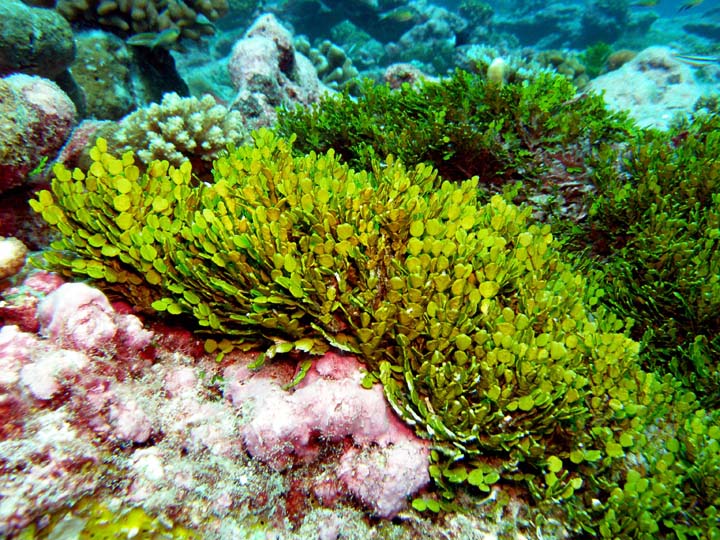Halimeda Macro Algae is part of the Chlororphyta Phylum, which is the most diverse division of algae. This Phylum of algae is found worldwide, in both freshwater and marine environments. It consists of both multi and unicellular organisms. These organisms also contain the Chlorophyll pigment, which makes them a orange to green color. The Chlororphyta Phylum is an important division of Marco algae because it produces oxygen and provides a food source for certain marine organisms. It is also used for human purposes such as food starch, feed in animal food, and biological research.

Halimeda Chlororphyta (Cactus Algae) are a green calcareous algae, that are found in subtropical regions, such as The Great Barrier Reef. It flourishes well in these areas due the sunlight, even though Halimeda do not necessarily need a lot of it to live. This type of Macro Algae also require high amounts of calcium and Alkalinity to grow.
Most Halimeda Macro Algae grow about 15 centimeters tall and are bright green. It's body structure consist of the thallus(body) made of calcareous segments/leaves, and a holdfast, which attaches it to the sea floor. The segments attached to the stem and thallus are flattened and calcium carbonated. Each of these segments are attached to its neighbor segment by a thin strand, which gives it flexibility. These unique calcified leaves also protect the Halimeda from being eaten by most herbivores because of its hard structure and toxicity. They also play a huge role in marine sediment. For example, much of the sand located in the Caribbean beaches are sun bleached calcium sediments let off by Halimeda or some other similar calcareous algae.